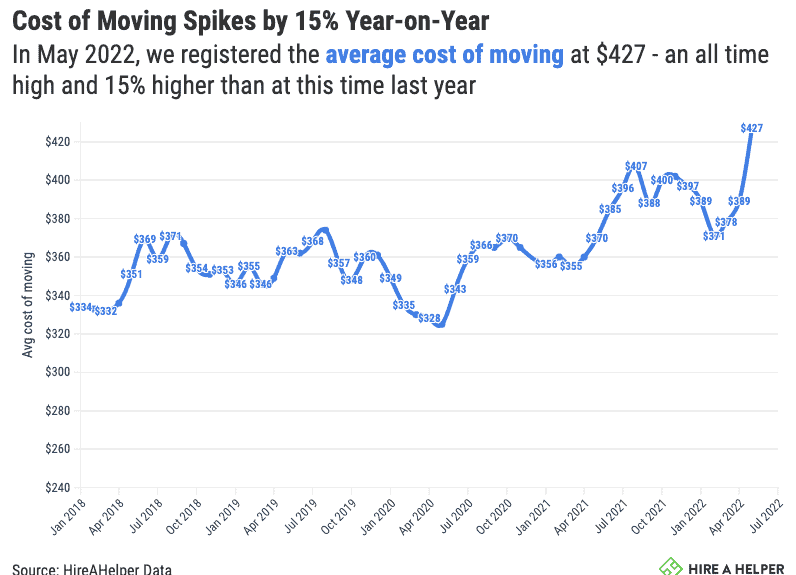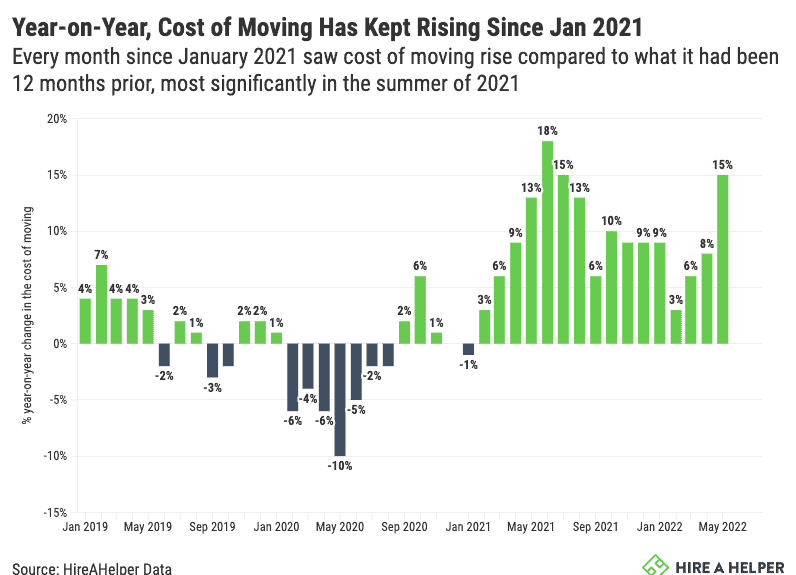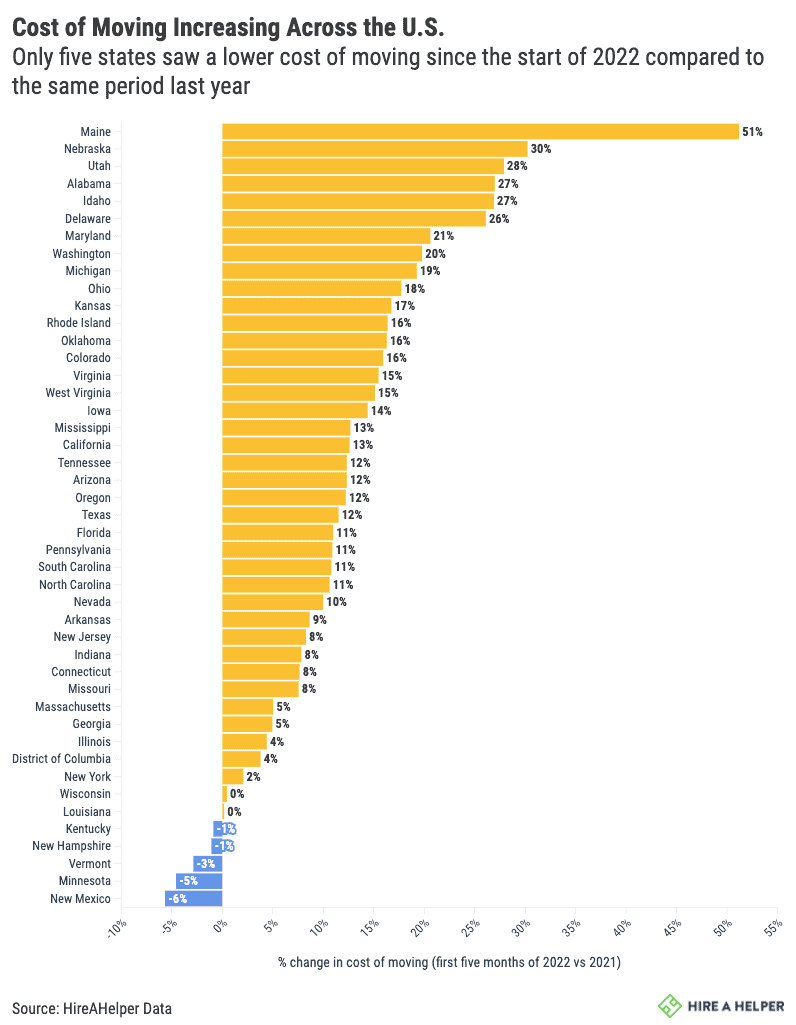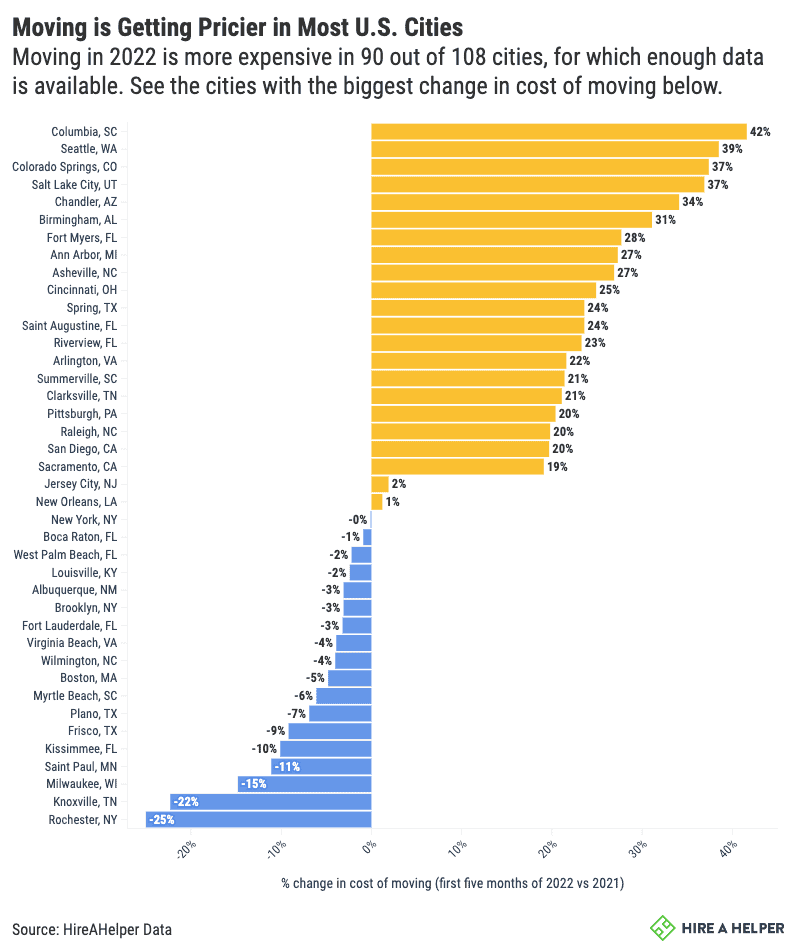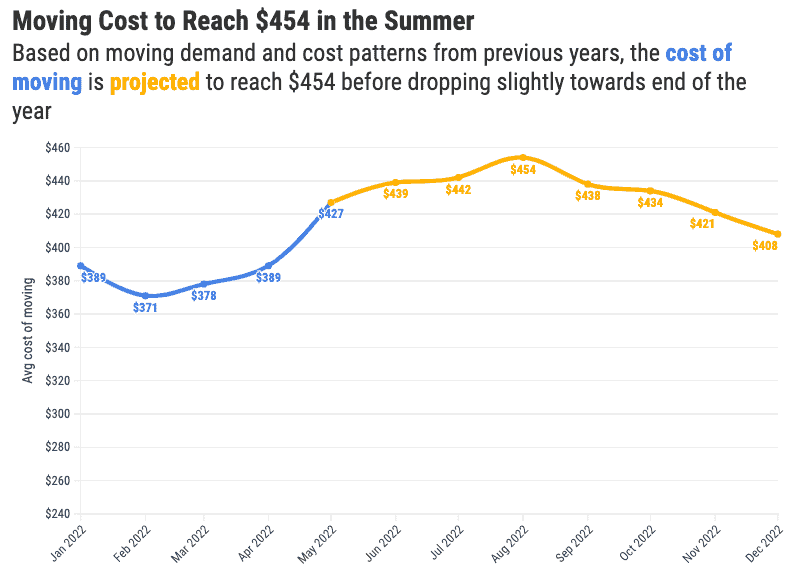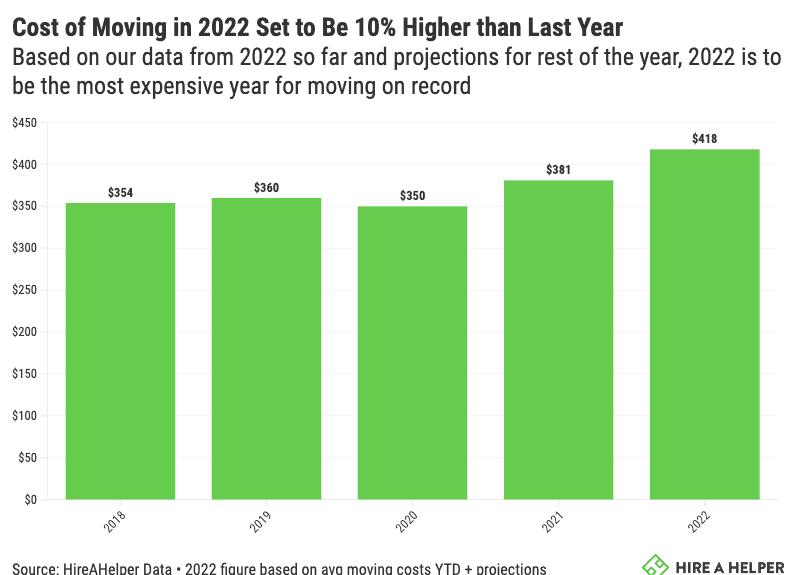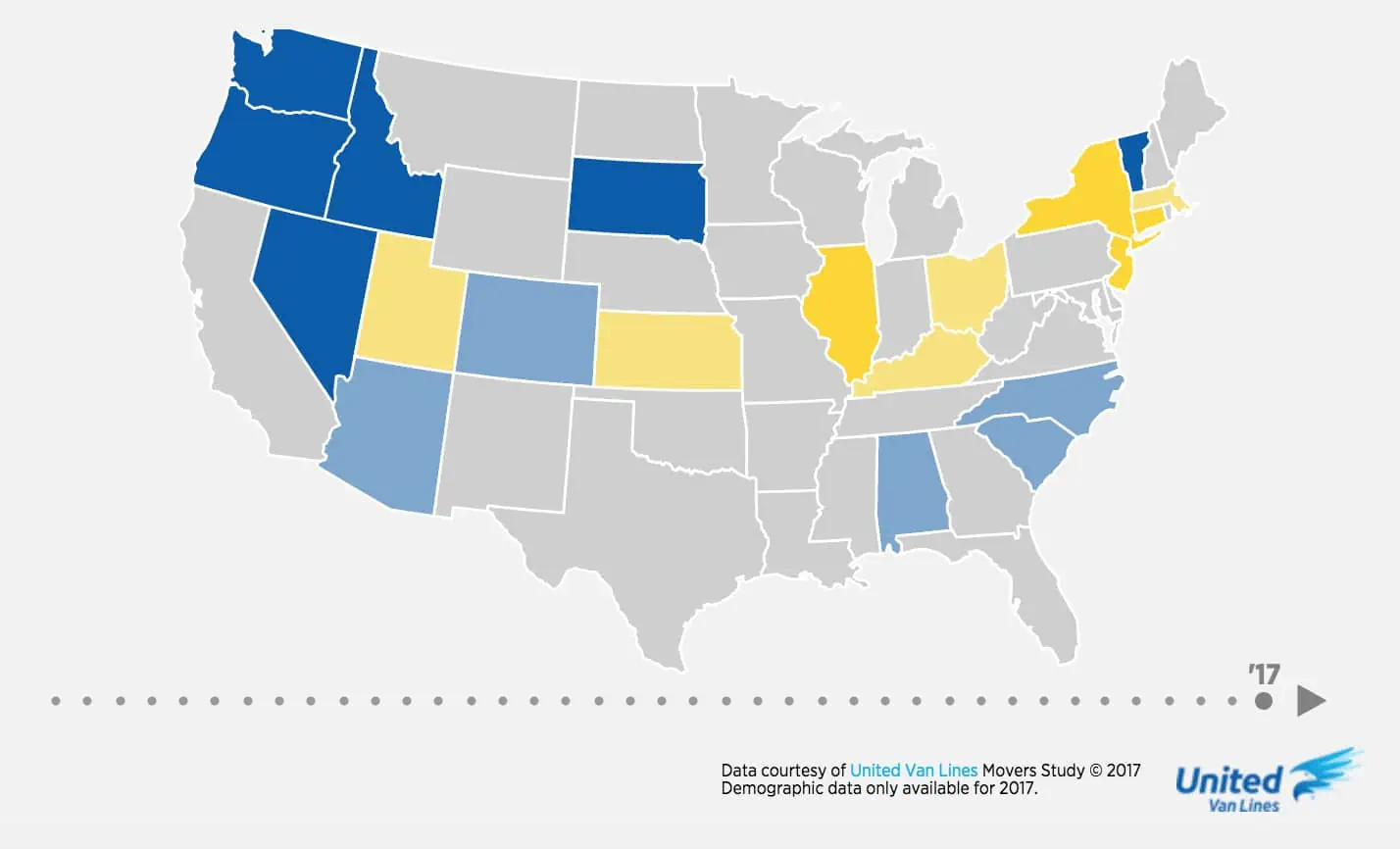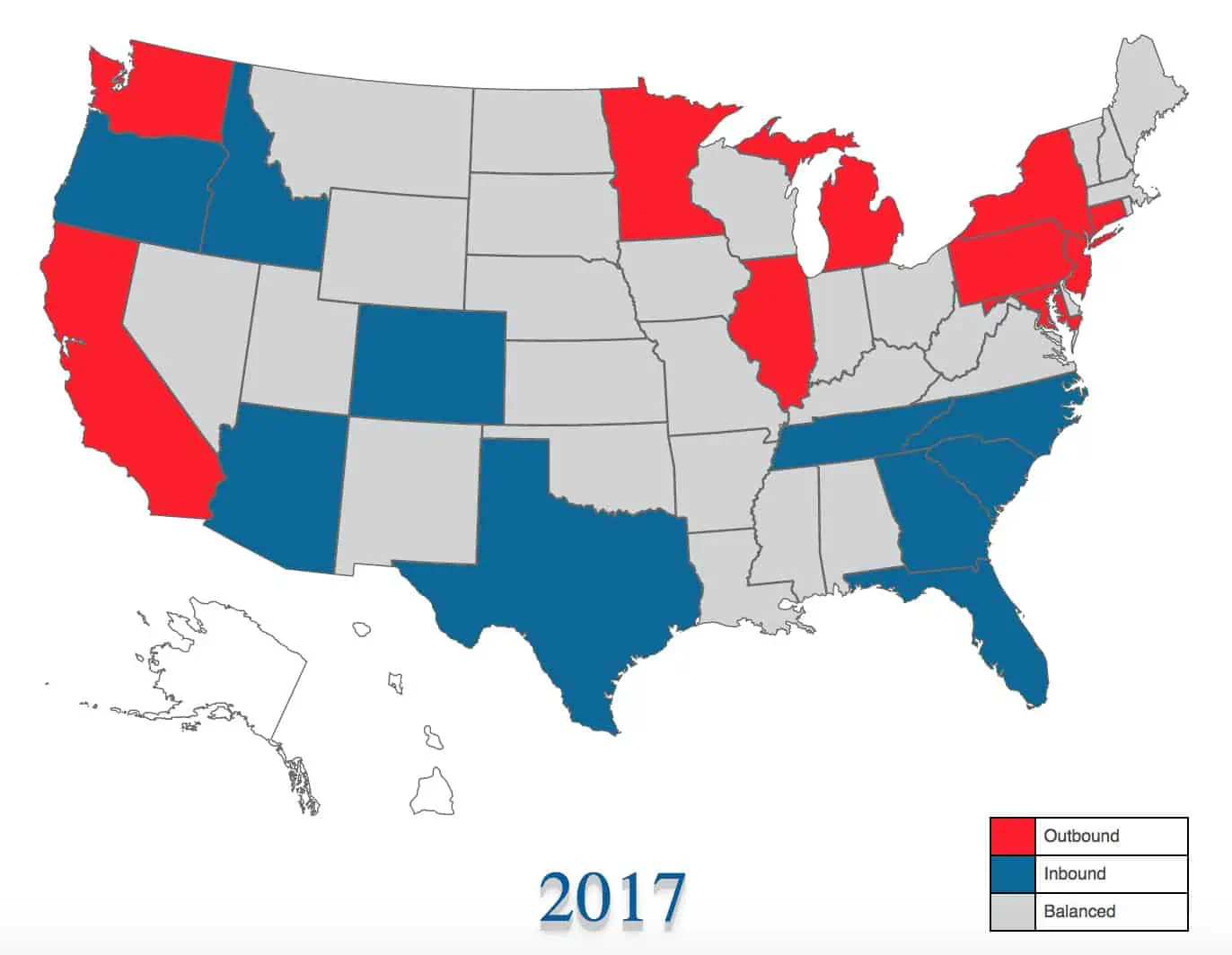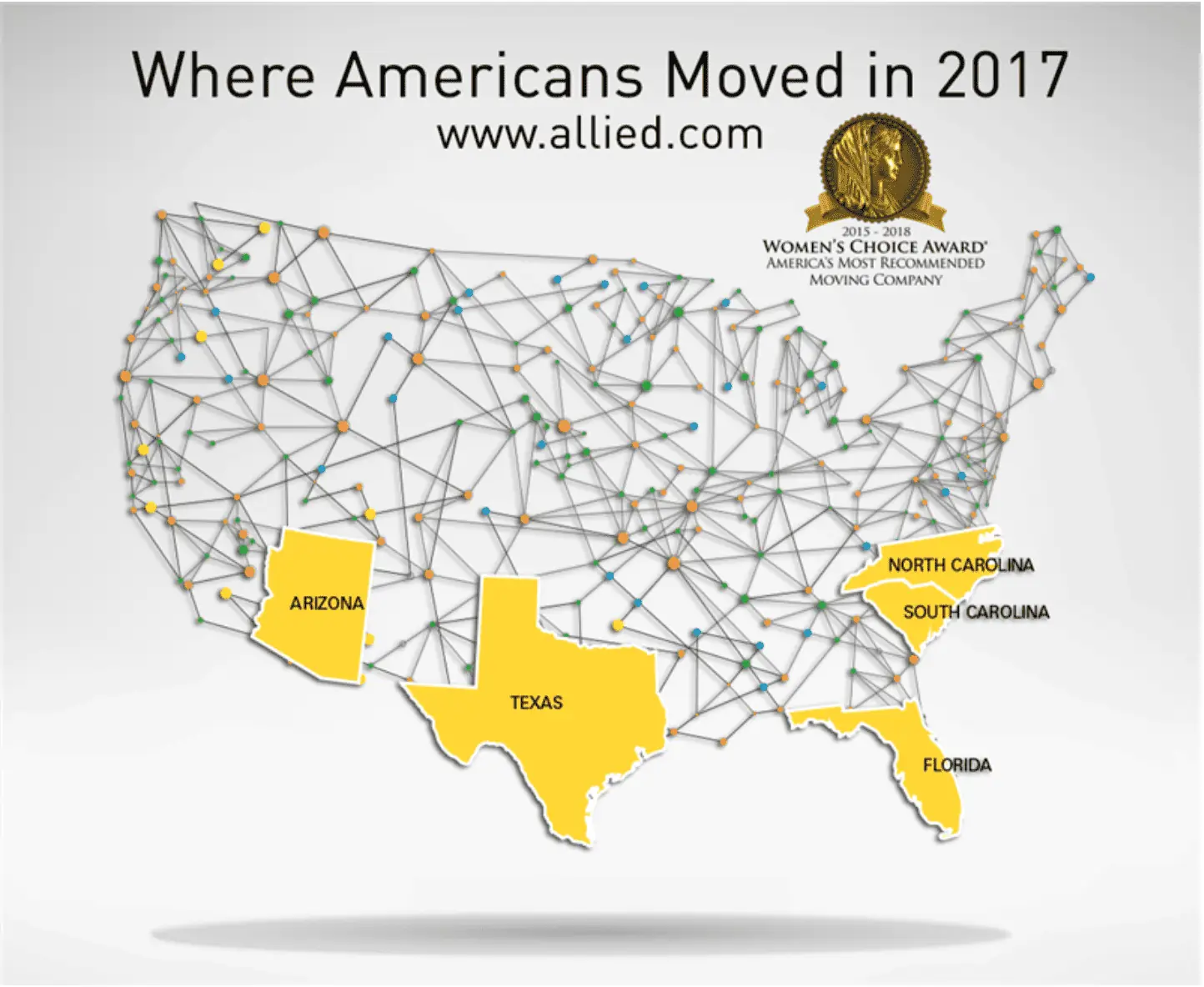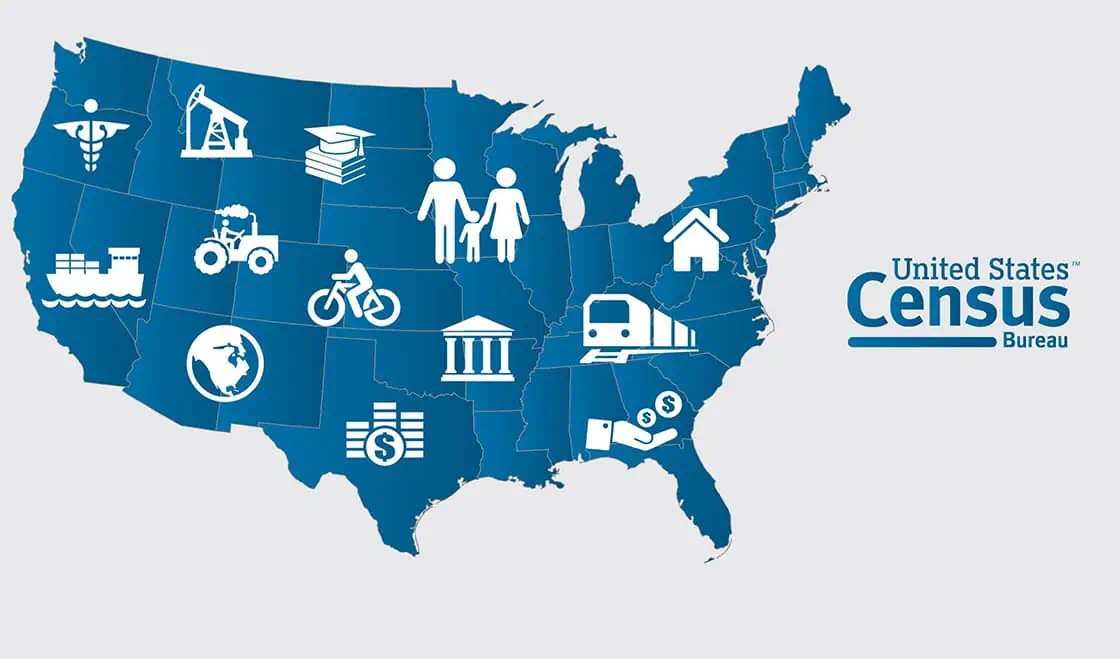The BBB estimated that the average moving scam victim lost $350 in 2023, while a staggering 5,918 complaints were made about bad actors posing as legitimate moving companies.
Meanwhile, a Yahoo Finance piece projected that moving scams would cost consumers over $1.5 million in 2024, a 42% jump from the previous year. As these numbers continue to climb, you should know how these scams work and why they’re so rampant.
Below, we break down the most common moving scam tactics, how to spot them, and a step-by-step plan for keeping your move safe. We’ve also included a few bonus homeowner scams to watch out for — because nobody wants to be blindsided by fraud when settling into a new place.
Common Types of Moving Scams
It can be tempting to pick a mover offering a cheap moving quote without doing much research. Unfortunately, that’s exactly where many moving scams begin. Let’s take a look at the most widespread ones.
Fake Moving Companies (Bait-and-Switch Tactics)
Some scammers pose as legit businesses with polished websites and paid-for fake reviews. They offer strikingly low quotes compared to typical market rates. Once they pick up your stuff, they switch the rate to something much higher or tack on bogus charges, holding your belongings hostage until you pay.
Hostage Loads
With a hostage load scenario, the mover arrives and loads your items, then refuses to deliver them unless you cough up significantly more money. These hostage-style threats can turn an already stressful situation into a nightmare.
Overcharging and Hidden Fees
Even real moving companies can indulge in shady fee structures. They’ll hook you with a friendly phone quote but bill you afterward for extra labor, time, fuel costs, or equipment fees that were never disclosed. If you challenge it, they threaten to hold onto your belongings unless you settle the inflated bill.
Rogue Movers Disappearing With Belongings
Some moving scam criminals don’t even bother with a hostage approach — they just vanish with your property. Victims in these cases might end up filing police reports or insurance claims without any guarantee of recovering their items or getting their hard-earned money back.
How to Spot a Moving Scam
Staying alert to moving scam red flags can keep you from falling into a scammer’s trap. Here’s what to look out for:
- Lack of credentials: All interstate movers must be registered with the FMCSA and have a USDOT number. If a company refuses to provide this info — or they don’t appear in the FMCSA database search results — it’s a major red flag.
- Refusal to provide a written quote or perform inspections: Reputable residential movers typically need to see your items (in person, via video/photos, or inventory list) before quoting. If the mover refuses to give you a moving quote in writing, or insists on giving a blind quote, that’s suspicious.
- No booklet: By law, interstate movers must give you a copy of the FMCSA’s Your Rights and Responsibilities When You Move booklet and the Ready to Move brochure. If a mover doesn’t provide these, they’re likely clueless or crooked. Either way, this isn’t someone you should trust with your stuff.
- Excessive deposit demands: Some movers ask for modest deposits, but if they want a large chunk upfront, beware. Unscrupulous movers may insist on high deposits, then disappear.
- Pushy sales tactics: If they pressure you to sign a contract immediately or won’t let you read the fine print, something isn’t right.
- Location matters: Some states, including Florida, are hotbeds for moving scams. In 2022, 3,338 out of 7,647 FMCSA moving scam complaints nationwide came from the Sunshine State. As of 2023, Florida still led with roughly 1,871 out of 3,907 complaints.
The FMCSA has put together an official moving checklist to help consumers stay confident throughout the process.
“Write down dates, times, names, and every conversation you had with the mover. Save all emails, text messages, contracts, estimates, and receipts, and take photos of any damaged or missing items. Documentation is essential when reporting the scam or pursuing legal action.”
Additionally, you can look up the mover’s name on Google, the FMCSA’s Consumer Complaint Database, and the BBB’s Scam Tracker to see if any complaints pop up. If you see patterns of overcharging or unprofessional behavior, move on quickly.
Steps to Avoid Moving Scams
Knowledge is your best packing partner. Consider this section your personal scam-proof-your-move toolkit:
- Verify the moving company’s USDOT number if you’re moving interstate. For local moves, consult your state’s consumer protection offices.
- Don’t rely solely on star ratings on one platform. Skim real-life feedback from the BBB and reputable consumer websites.
- Choose a mover using a comparison tool that shows you prices, reviews, services, credentials, and availability for vetted moving companies.
- The FMCSA suggests that getting at least three quotes reduces the risk of picking an outlier. If one quote is conspicuously low (say, 30% lower than average), question it.
- Have the mover outline any extra fees for stairs, heavy items, or extended carry distances.
- A binding estimate is supposed to lock in your price, while non-binding may fluctuate. Know which one you’re signing.
- Make sure all fuel surcharges, labor add-ons, long-haul fees, and appliance service fees are spelled out in advance.
- Document your jewelry, furniture, electronics, and fragile items. If necessary, take photos or videos for insurance claims. And if at all possible, move these important items with you instead of with the movers.
At HireAHelper, we believe local moving services should be transparent and cost-effective. Here’s how we help:
- We compile price quotes from top-rated, vetted Service Providers so you can compare immediately.
- Authentic feedback from real customers helps you pick a moving team you can trust and that meets your specific needs.
- If a mover cancels or fails to show, we step in to help you find another option, alleviating last-minute stress.
But what if, despite your caution, you find yourself a victim of moving fraud?
What to Do If You’ve Been Scammed
If you suspect that you’ve fallen victim to a moving scam, acting quickly can make all the difference. Here’s a step-by-step guide:
-
- Record everything: Write down dates, times, names, and every conversation you had with the mover. Save all emails, text messages, contracts, estimates, and receipts, and take photos of any damaged or missing items. Documentation is essential when reporting the scam or pursuing legal action.
- Local law enforcement: Report the incident to your local police department.
- Federal Motor Carrier Safety Administration (FMCSA): File a complaint with the FMCSA online. Include your full documentation and a clear timeline of events. The FMCSA cares deeply about protecting consumers against moving scams. It developed the Protect Your Move initiative and doubled the number of investigators assigned to moving fraud.
- Better Business Bureau (BBB): Submit your complaint via the BBB’s Scam Tracker.
- State Attorney General’s office: Contact your state’s attorney general to report fraudulent moving practices and seek further assistance.
- Consult a Lawyer: Local legal associations can help you find affordable representation.
- Small claims court: If your losses are below your state’s small claims threshold, consider filing a claim.
- Credit card dispute: If you paid with a credit card, contact your card issuer immediately. Many banks offer fraud protection and may reverse charges for unauthorized transactions.
- Insurance claims: If you purchased moving insurance or the mover provided insurance, file a claim to cover lost or damaged items. Review the policy details carefully to ensure you follow the proper claim process.
- Consumer advocacy: Utilize the resources available at the consumer sentinel network.
- Online forums and groups: Join dedicated groups on Facebook or Reddit where victims share their experiences and advice.
- Local consumer protection offices: Many cities have non-profit consumer advocacy groups that provide free advice and support.
Other Common Homeowner Scams to Watch For
Moving isn’t the only time homeowners face fraud. Take a look at these other scams that can pop up when you’re buying, renting, or maintaining your home:
Home Repair Fraud
- Red flag: Contractors knocking on doors unannounced, claiming your roof or driveway needs urgent repairs.
- Tip: Verify licensing and references. Don’t pay in full until the work is done and inspected.
Fake Landlord or Rental Scams
- Red flag: A landlord asking you to wire money before you see the unit or sign a lease.
- Tip: Always view the property, meet the landlord, and confirm ownership before handing over funds.
Insurance Fraud Schemes
- Red flag: Suspiciously low quotes from brokers with no clear documentation of what’s covered.
- Tip: Contact reputable insurance companies or use official marketplaces. If necessary, ask for credentials and an NAIC ID.
A Scam-Free Move is a Happy Move
A safe move starts with awareness. By following the tips and tactics outlined here, you’ll turn a daunting task into a smooth ride — no scams, no regrets.
If you’ve encountered a moving scam, sharing your story can help others stay vigilant. Post it on neighborhood forums, get on social media, talk to friends, and encourage family members to do thorough research before hiring a mover.
Ready for a stress-free move? At HireAHelper, we connect you with trusted professionals who prioritize honesty, professionalism, reliability, and transparent pricing. Compare real quotes in minutes and see for yourself how easy moving can be when you’re in control.




 In last year’s
In last year’s 
 If you’re moving cross-country from the East Coast to California, you can expect to spend between
If you’re moving cross-country from the East Coast to California, you can expect to spend between  With COVID-19 causing many to shift to remote work, employees who were once tied to a desk suddenly had the freedom to find somewhere more affordable to put down roots.
With COVID-19 causing many to shift to remote work, employees who were once tied to a desk suddenly had the freedom to find somewhere more affordable to put down roots. 

 As we noted earlier, nearly four in ten (40%) of our survey respondents said they are planning to move at some point this year.
As we noted earlier, nearly four in ten (40%) of our survey respondents said they are planning to move at some point this year.  Among people living in America’s biggest metropolitan areas, the intent to move is highest in
Among people living in America’s biggest metropolitan areas, the intent to move is highest in  Granted, the higher rates of inflation from 2022 seem to have
Granted, the higher rates of inflation from 2022 seem to have  One significant reason that’s beginning to factor into the moving plans of Americans is “Climate Change” (14.9%), which is in fact distinct from “Want Nicer Weather” (10.4%).
One significant reason that’s beginning to factor into the moving plans of Americans is “Climate Change” (14.9%), which is in fact distinct from “Want Nicer Weather” (10.4%). Based on HireAHelper figures for the first five months of 2023,
Based on HireAHelper figures for the first five months of 2023, 




